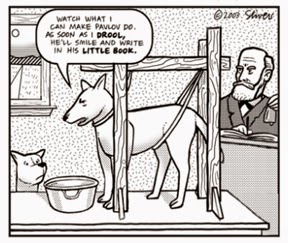Some marketers have earmarked content agility at five years out. It will happen much faster than that in a multi-channel, multimedia world. It's happening now to offset the content creation explosion.
Specifically, content agility addresses the increasing need for horizontal and vertical structures that can organize content not only by search (placing the burden on the consumer), but also by logical pathways (publishers providing opportunities for expansive content). The general idea of content agility is to save consumers time (not demand more of it) by providing clear pathways to their goals.
What does content agility really look like in the future?
One early example of content agility was featured in a commercial for the Google Nexus 7. Although the commercial focuses primarily on consumer-generated searches (given that it is a Google commercial), content agility takes the concept further by providing consumers touch points that provide opportunities to follow nonlinear pathways toward specific topics and deeper research.
Specific to this commercial, content agility would not wait for the consumer to define a search term, it would be designed to open pathways in nonlinear directions (e.g., to learn more about a president or to learn more about speeches or to learn more about self-confidence, etc.) simply by touching the president or his speech or his hand gesture. Such an interface would feel impossibly intuitive.
What can content agility really look like today?
Right now, most content marketers create content and flood every social channel where they have an outpost with the new content, screaming "hey look, new content." They load it up with hooks and baits too because the entire objective (as stupid as this sounds) is to make us feel an emotional tug to click on a link and learn more (only to be disappointed about 98 percent of the time).
Content agility doesn't operate in this manner. It creates a content hub with increasingly deeper content that is also interlinked with all other content assets when appropriate. For lack of an inactive example, think of Wikipedia cross linking but with a greater emphasis on visual presentation (over text), inactive media, and scroll over interfaces.
Social network marketing can be handled in much the same way. As mentioned, most marketers burp out the same content leads across all channels. But what if they didn't? What if each social network featured very specific content, giving participants different reasons to each network rather than seeing the same content on all of them? It makes more sense and creates much more dynamic engagement.
A few recent articles that are exploring content agility.
• 5 Tips To Liven Up Long Stories by Geoff Livingston
Specifically, content agility addresses the increasing need for horizontal and vertical structures that can organize content not only by search (placing the burden on the consumer), but also by logical pathways (publishers providing opportunities for expansive content). The general idea of content agility is to save consumers time (not demand more of it) by providing clear pathways to their goals.
What does content agility really look like in the future?
One early example of content agility was featured in a commercial for the Google Nexus 7. Although the commercial focuses primarily on consumer-generated searches (given that it is a Google commercial), content agility takes the concept further by providing consumers touch points that provide opportunities to follow nonlinear pathways toward specific topics and deeper research.
Specific to this commercial, content agility would not wait for the consumer to define a search term, it would be designed to open pathways in nonlinear directions (e.g., to learn more about a president or to learn more about speeches or to learn more about self-confidence, etc.) simply by touching the president or his speech or his hand gesture. Such an interface would feel impossibly intuitive.
What can content agility really look like today?
Right now, most content marketers create content and flood every social channel where they have an outpost with the new content, screaming "hey look, new content." They load it up with hooks and baits too because the entire objective (as stupid as this sounds) is to make us feel an emotional tug to click on a link and learn more (only to be disappointed about 98 percent of the time).
Content agility doesn't operate in this manner. It creates a content hub with increasingly deeper content that is also interlinked with all other content assets when appropriate. For lack of an inactive example, think of Wikipedia cross linking but with a greater emphasis on visual presentation (over text), inactive media, and scroll over interfaces.
Social network marketing can be handled in much the same way. As mentioned, most marketers burp out the same content leads across all channels. But what if they didn't? What if each social network featured very specific content, giving participants different reasons to each network rather than seeing the same content on all of them? It makes more sense and creates much more dynamic engagement.
A few recent articles that are exploring content agility.
• 5 Tips To Liven Up Long Stories by Geoff Livingston
• 3 Tools To Create A Social Media Hub by Per Scmitz
• Introduction To Intuitive Content Creation by PSFK Labs












































